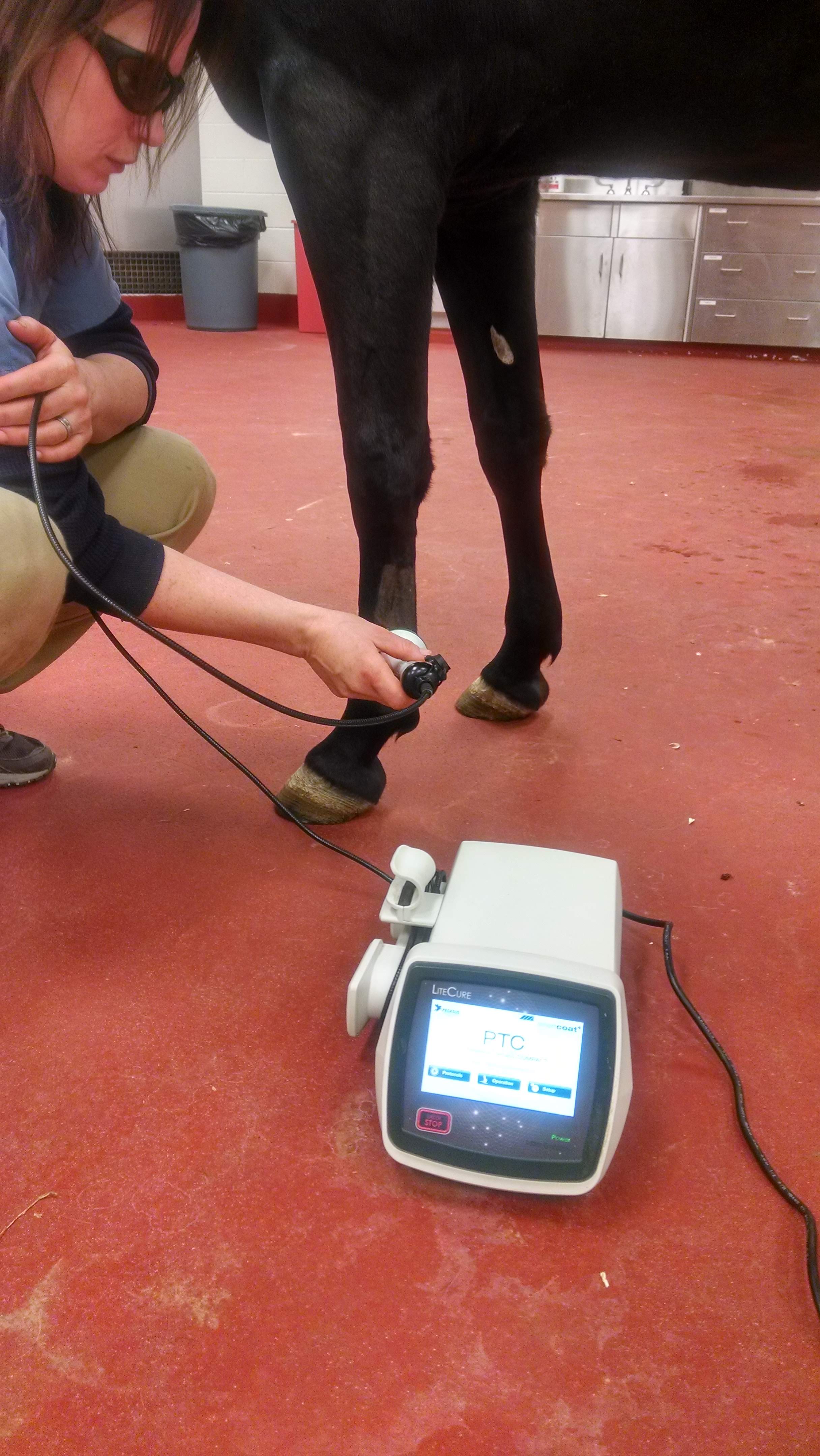Discover the Outstanding Benefits of Equine Therapy for Psychological Healing
Discover the Outstanding Benefits of Equine Therapy for Psychological Healing
Blog Article
Examining the Efficiency of Laser Treatment in Horse Treatment for Injury Recovery
The evaluation of laser therapy's efficiency in equine injury rehab pivots on several variables, including recuperation time, pain mitigation, and tissue regeneration. Veterinarians frequently observe superior results with laser therapy contrasted to traditional approaches, positioning it as a crucial aspect in equine treatment. Equine Therapy.

Understanding Laser Treatment
Laser therapy has actually become a critical tool in vet medication, especially in the treatment of equine conditions. Known for its non-invasive nature and efficacy, laser therapy includes the application of particular wavelengths of light to boost cells repair work and lower swelling. This healing modality is significantly preferred for its capability to accelerate the recovery procedure in equines struggling with a selection of bone and joint injuries and chronic problems.
The primary system behind laser therapy is its ability to boost cellular features. When laser light passes through the skin, it is taken in by mitochondria, the giant of cells, which results in increased manufacturing of adenosine triphosphate (ATP) This biochemical power increase assists in cellular repair work and regrowth. Additionally, laser therapy advertises vasodilation, boosting blood circulation and oxygen delivery to damaged tissues, thus accelerating healing.
In equine medication, laser therapy is specifically helpful for problems such as tendonitis, osteoarthritis, and injury recovery. The technique is admired for its pain-relieving properties, enabling equines to reclaim mobility and function more quickly. Veterinarians likewise value its marginal side impacts compared to various other treatment methods, making it a trustworthy and safe choice for equine treatment.
Just How Laser Therapy Functions
To comprehend just how laser treatment works, it is important to explore the interaction in between light power and organic tissues. Laser treatment, additionally referred to as Low-Level Laser Therapy (LLLT) or photobiomodulation, employs specific wavelengths of light to penetrate tissues and promote mobile procedures. The device depends upon the absorption of photons by cell chromophores, mainly within the mitochondria, which are critical for power production.
Upon absorption, these photons trigger a series of biochemical modifications, boosting mitochondrial function and leading to increased adenosine triphosphate (ATP) production. This increase in ATP speeds up cellular metabolic rate, promoting tissue fixing and regrowth. Furthermore, laser therapy modulates inflammatory actions by impacting cytokine levels and reducing oxidative stress, thus minimizing discomfort and swelling.
One more considerable element of laser therapy is its duty in enhancing microcirculation. The therapy promotes vasodilation, enhancing blood circulation and oxygen distribution to broken cells. This helps with the elimination of mobile debris and supports the spreading of fibroblasts and collagen synthesis, important for wound recovery.
Medical Proof
The efficiency of laser therapy in equine treatment has been substantiated through different professional researches, showcasing its healing possible across a variety of problems. websites A research performed by Turner et al. (2012) showed that horses treated with low-level laser therapy (LLLT) for ligament injuries exhibited sped up recovery compared to those receiving conventional treatments.
Similarly, research by Johnson and coworkers (2015) focused on equine muscle mass injuries, revealing that laser therapy dramatically sped up muscular tissue fiber regeneration and reduced muscle stiffness. These findings were proven by histological evaluations revealing improved muscle mass tissue organization. Scientific analyses have shown that laser treatment can alleviate persistent conditions such as osteoarthritis. A research by Smith et al. (2018) reported that steeds with osteoarthritic joints experienced noteworthy discomfort alleviation and raised series of movement complying with a routine of laser therapy sessions.
Veterinarian Insights
Vet specialists have increasingly recognized the worth of laser treatment in equine therapy, pointing out both empirical proof and firsthand experience. Dr. Jane Smith, a leading equine veterinarian, notes that laser therapy Read Full Report has shown remarkable effectiveness in lowering inflammation and increasing tissue repair.
Vets additionally appreciate the flexibility of laser treatment. It can be employed for a large range of conditions, from shallow injuries to much deeper bone and joint injuries. Dr. Emily Brown highlights its energy in dealing with problems like tendonitis and osteoarthritis, where standard treatments usually fail. She mentions that laser treatment can be tailored to the particular requirements of each equine, making certain optimum outcomes.

Practical Factors To Consider
A vital facet of applying laser treatment in equine therapy involves understanding the sensible factors to consider that guarantee its effectiveness and safety. Most importantly, it is crucial to select the proper laser tool, as different kinds vary in wavelength, power, and penetration deepness. Vets need to be fluent in these criteria to tailor treatment procedures properly to every injury type
In addition, the frequency and period of laser treatment sessions require mindful planning to make best use of healing benefits while reducing any type of prospective damaging effects. Consistent surveillance of the steed's reaction to treatment can lead required adjustments in the therapy routine. Developing a safe and regulated atmosphere during therapies is likewise vital to protect against unexpected exposure to laser exhausts, which could harm both the equine and the trainer.
Educating and accreditation of workers administering laser therapy are paramount to ensure appropriate technique and to maintain security requirements. Additionally, keeping exact records of each session, consisting of laser settings and observed results, is vital for assessing the general efficiency of the therapy and for making data-driven decisions.
Final Thought
Laser treatment has arised as a reliable modality in equine injury rehabilitation, using significant advantages in recovery time, pain alleviation, and cells healing. Professional research studies underscore considerable renovations in conditions such as tendonitis and osteoarthritis, associated to improved mobile feature and raised ATP manufacturing. Vet observations substantiate these findings, highlighting remarkable end results compared to traditional treatments. For ideal outcomes, continual tracking and customized therapy protocols remain necessary in leveraging the complete potential of laser therapy in my blog equine treatment.
Report this page